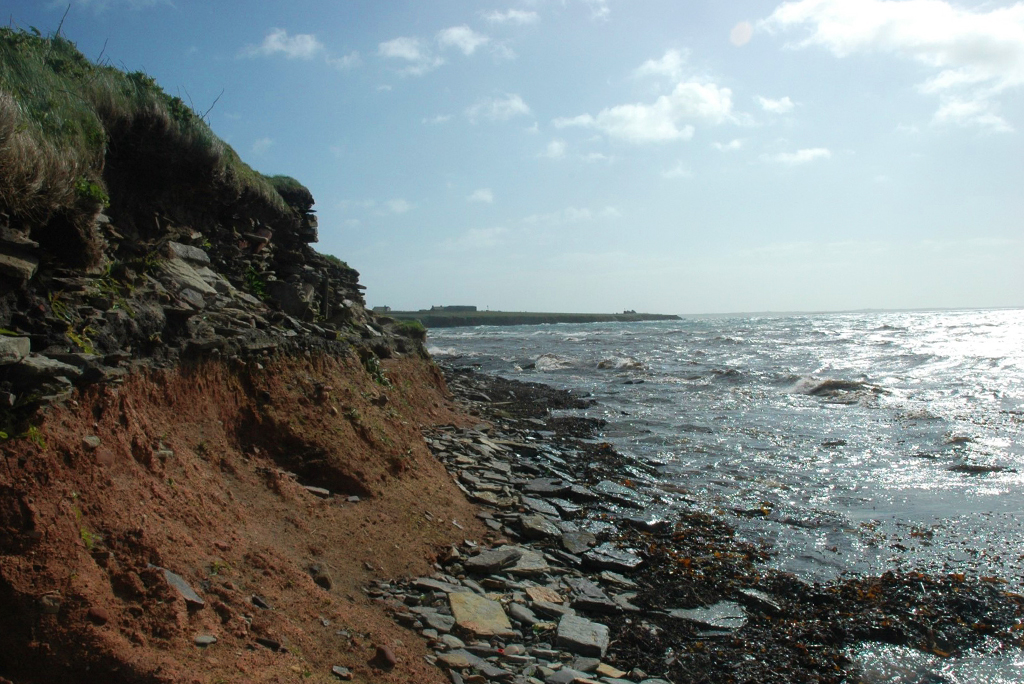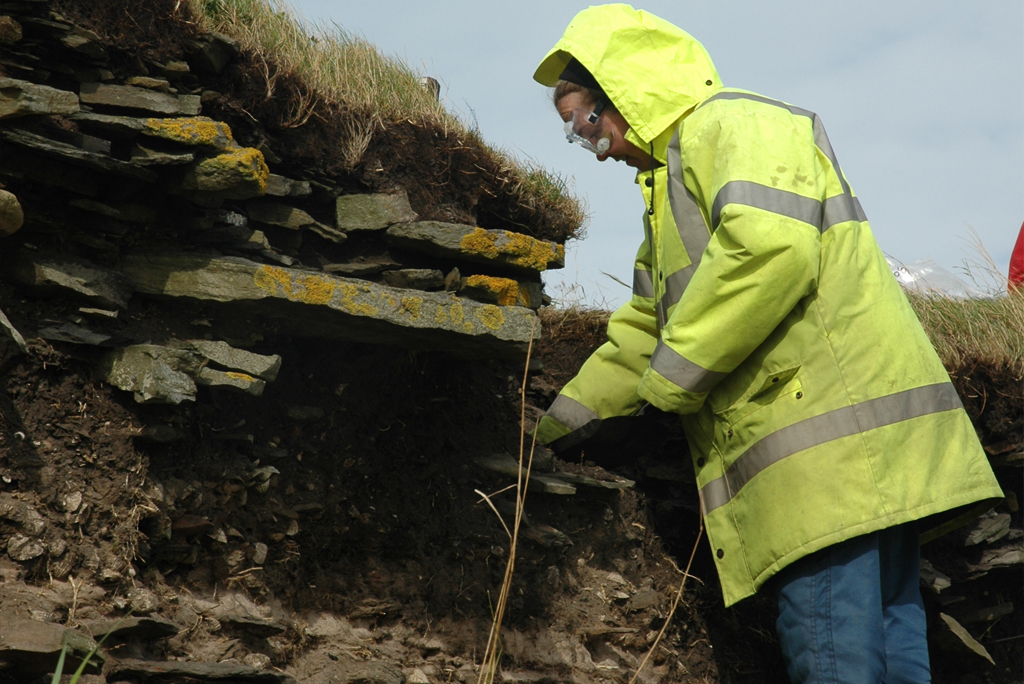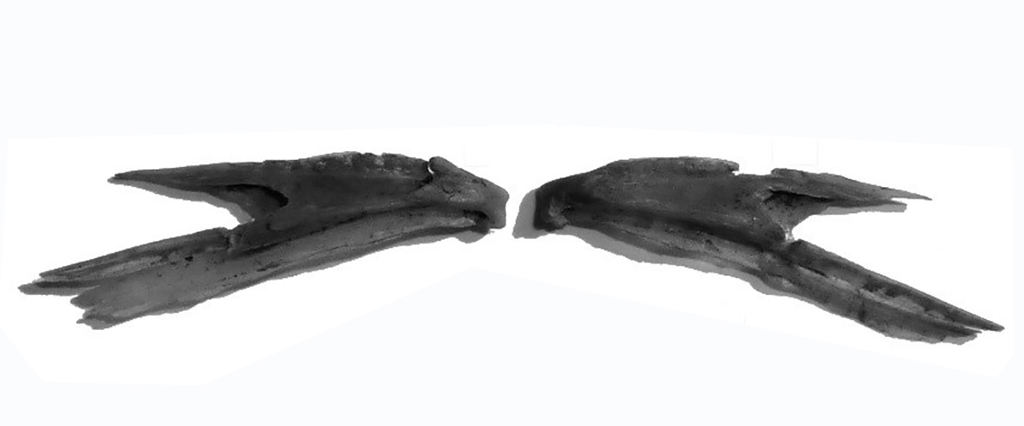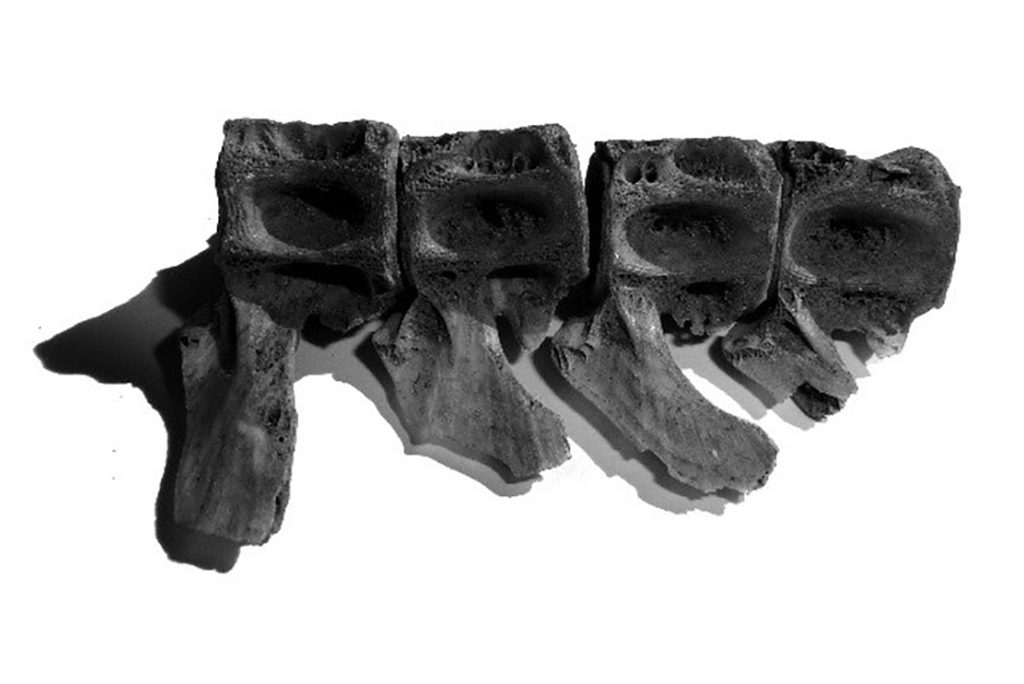Welcome to Stackelbrae – a medieval/post-medieval farmstead at the south end of Eday, Orkney.
It’s being aggressively eroded by the sea, exposing complex structural remains and rich midden deposits. We investigated them between 2006 and 2009 to find out more…

The tide at Stackelbrae
What’s in a Midden?
Middens may be rubbish dumps, but that means they’re often long-lived, rich sources of information. We can tell a lot about people’s diet and livelihoods from a midden.
By analysing the midden at Stackelbrae we were able to better understand farming and fishing practices there over several centuries.
For instance, we found fish bones showing that cod, saithe, ling, rocklings and haddock were all part of the diet. Small numbers of other families, including flatfish, skates, eels and wrasse were there too. There were also dense limpet dumps, which would have been used as bait.
Alongside the plant remains and animal bones from Stackelbrae, this shows us the inhabitants had access to a wide range of resources.

Excavating the midden
For Cod’s Sake: Fishing in the Viking & Norse Periods
The Northern Isles have an abundance of Viking Age and Late Norse period fish assemblages (a term we use to mean a collection of objects).
Cod became increasingly important from the late Iron Age onwards. It was the fish of choice in the Viking Age, exploited in vast quantities and deposited in specialised (enormous!) fish middens at coastal sites. The fish bone from Stackelbrae also follows this pattern.
The oldest parts of the midden mainly show large cod family fish from deeper waters. When we used radiocarbon dating, we found an early midden layer going back to the 9th – 12th century.
Sea-faring knowledge was essential, as these larger cod were more likely to be caught in deeper water, some distance offshore. Considerable knowledge of the sea, its risks, and boating technologies were needed.
During the 13th and 14th centuries, fishing practices in the Northern Isles started to chance. Exploitation of cod declined and the fish that were found became smaller.
Some Might Saithe: Medieval Fishing
At Stackelbrae, our analysis shows that residents began to use more smaller, inshore saithe some time in the late post-medieval/early modern period. It’s something we’ve also seen at other sites in Orkney, such as Quoygrew.
We know from historical sources inshore saithe was a huge part of the Orkney diet in the 18th and 19th centuries. Sources also show us Orcadians were no longer fishing deeper waters or on the same scale as in earlier centuries.

Butchered saithe bones
There were larger bones within the midden at Stackelbrae too though. We think this means the change in fishing methods from deep-sea to inshore took a long time.
And analysis of butchery marks on the fishbone suggests some fish may have been preserved for later consumption.
Denouement from the Deep
The Stackelbrae farmstead gives us a unique opportunity to examine changes in fishing methods. We also got to look at what fish was eaten from the Viking and Norse periods onwards. This is something that has tended to be missing from other sites.
While the inhabitants of Stackelbrae followed general fishing trends and methods, some remains show us traces of individual and local preferences – for instance in butchery.
Sites with substantial fish assemblages extending into the later 2nd millennium AD are very rare. The fish bone from Stackelbrae spans this period, filling a gap between the archaeological record ending and the historical record beginning.
At Stackelbrae, we took another step towards uncovering the full story of medieval and early modern fisheries of the Northern Isles.
Thanks to Amanda Brend, Project Officer with ORCA, and Dr Jennifer Harland of the UHI Archaeology Institute for this post.

